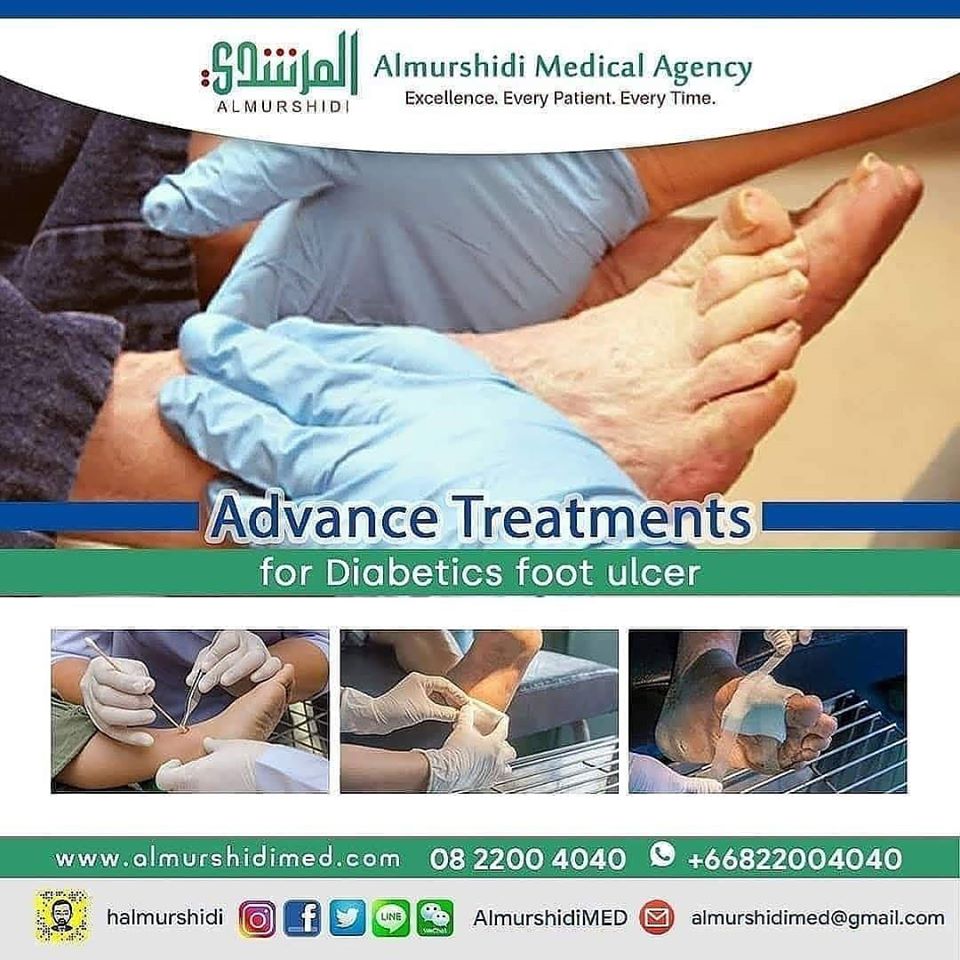
Diabetic foot ulcer is a major complication of diabetes mellitus, and probably the major component of the diabetic foot. Diabetic mellitus is one of the chronic diseases that can result in several complications.
One of serious complications is diabetic neuropathy that eventually leads to “diabetic ulcer”.
With damaged nerves mainly in the feet and legs, diabetic ulcers are prone to be infected easily with poor healing. To prevent or delay diabetic ulcer and its complications, it is highly recommended to keep control of blood sugar level and take good care of the feet and legs.
Diabetic foot ulcer is an open sore or wound that occurs in approximately 15 percent of patients with diabetes and is commonly located on the bottom of the foot. Those who develop a foot ulcer, 6 percent will be hospitalized due to infection or other ulcer-related complication.
Causes
- Anyone who has diabetes can develop foot ulcers.
- Native Americans, African Americans, Hispanics, and older men are more likely to develop ulcers.
- People who use insulin are at higher risk of developing a foot ulcer, as are patients with diabetes-related kidney, eye, and heart disease.
- Being overweight and using alcohol and tobacco also play a role in the development of foot ulcers.
Symptoms
Many people who develop foot ulcers have lost the ability to feel pain, pain is not a common symptom. Many times, the first thing they may notice is some drainage on the socks, Redness and swelling may also be associated with the ulceration and, if it has progressed significantly, odor may be present.
Treatments
There are several key factors in the appropriate treatment of a diabetic foot ulcer;
- Prevention of infection
- Applying medication or dressing to the ulcer
- Taking the pressure off the area, called “off-loading
- Removing dead skin and tissue, called “debridement”
- Managing blood glucose and other health problems
Surgical options: a majority of non-infected foot ulcers are treated without surgery; however, if this treatment method fails, surgical management may be appropriate.
Examples of the surgical care to remove pressure on the affected area including shaving or excision of bone(s) and the correction of various deformities, such as hammertoes, bunions, or bony “bumps”.
What We Offer
We at Almurshidi Medical Tourism will find the best doctors and hospitals to cater to your needs. We are partnered with a wide network of hospitals and clinics that provide top quality medical experience.
We provide free medical estimates, make medical appointments and provide several medical opinions if needed at no cost.
Contact Us
For more information contact us at +66822004040 or via WhatsApp





